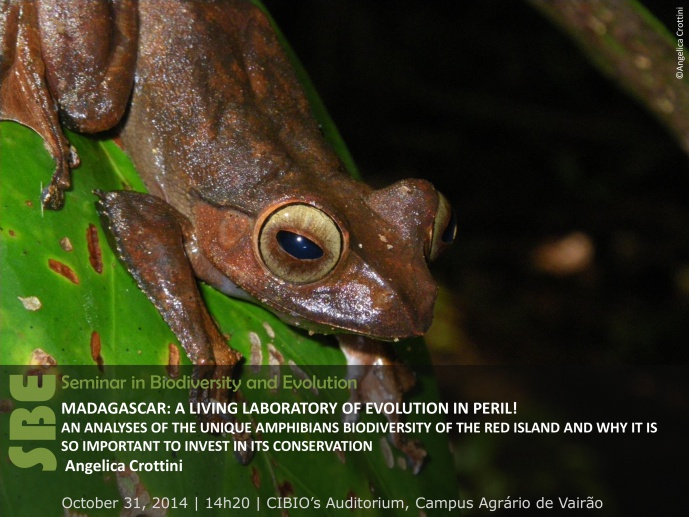MADAGASCAR: A LIVING LABORATORY OF EVOLUTION IN PERIL! AN ANALYSES OF THE UNIQUE AMPHIBIANS BIODIVERSITY OF THE RED ISLAND AND WHY IT IS SO IMPORTANT TO INVEST IN ITS CONSERVATION


Madagascar hosts an almost unparalleled concentration of endemic and endangered flora and fauna. Most of its extant fauna colonized the island around 60-70 Mya, when the island was already separated from all other landmasses. The native amphibian fauna is constituted by five independent anuran radiations with 100% species-level endemism. Among these, the Mantellidae is the most diversified family of anuran of Madagascar that here underwent a wide species radiation that resulted in the evolution of a plethora of morphological, ecological and reproductive traits. At the same time Madagascar is among the areas with the highest number of threatened amphibian species, and although it has a well-developed network of protected areas, ongoing habitat destruction, political instability, emergent infectious diseases and a newly identified alien invasive species are weakening protection in many reserves and put others at risk, threatening Madagascan unique biodiversity.
Angelica graduated in Biology from the University of Milano (Italy) in 2004 and she completed a PhD degree in Animal Biology in the same institution in 2008. During her PhD she started a parallel research activity on the evolution of malagasy herpetofauna, working with two of the top leading experts on Malagasy biota. Since then she worked in numerous projects on biogeography, taxonomy, phylogeny and phylogeography. In 2012 she moved to CIBIO-InBIO and she is currently trying to apply new methodologies to the study of the evolutionary radiations of Madagascar. She is involved in numerous conservation activities and she is one of the leading researchers responsible of the National Monitoring Plan for early chytrid detection in Madagascar, aiming at preventing the spread of the lethal chytridiomicosis in case it should arrive to the island. Since 2013 she is member of the Amphibian Specialist Group - Madagascar of the IUCN.
[Group Leader: D. James Harris, Applied Phylogenetics]
Image credits: Angelica Crottini